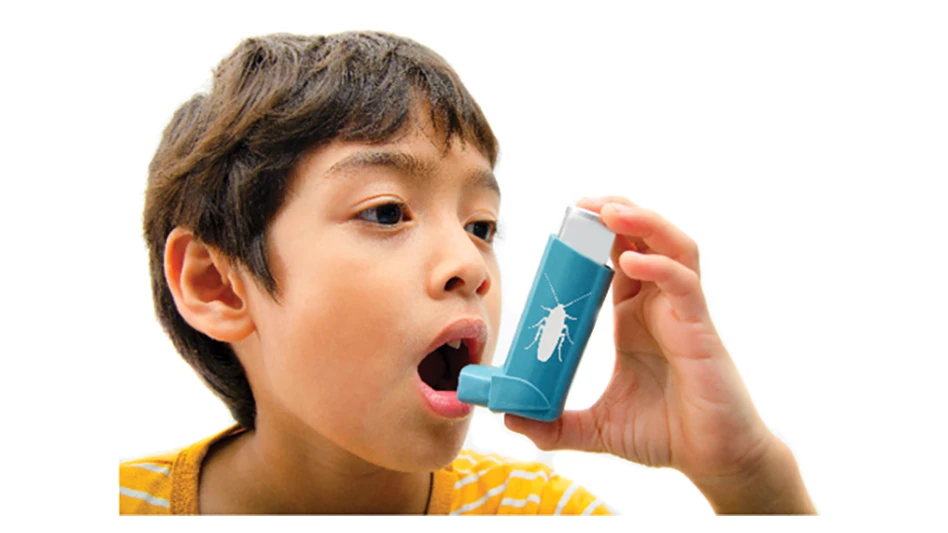The following research project was embarked upon by University of Florida researchers in hopes of developing better detection tools for termite infestations in structures. The authors knew that hidden access points in structures continue to make detecting termites a difficult task when only visual methods are used. Visual inspection methods typically include a walk around and through the structure with a flashlight, a probe, and maybe a moisture meter, with a clipboard to record findings. Dogs use smell, not vision, as their primary method of detection. Thus, visually inaccessible areas could be inspected as long as the dogs could sniff the area.
In part I, we documented that using pure training materials and the U.S. Customs Method of training combined with the food reward method of training, dogs were able to reliably detect termites with positive indication rates greater than or equal to 95% and false positive rates less than or equal to 6%. We defined "positive indications" as correctly identifying the presence of termites. "False positives" in this study meant that the dogs incorrectly indicated there were termites when there were no termites. Other questions surfaced during the course of our research. For example, if dogs were trained on eastern subterranean termites (EST), would they be able to detect other types of termites? Would dogs trained on eastern subterranean termites respond to damaged wood? Would they respond to other structural pests that live in a similar habitat? In part II, we answer these questions and discuss other studies where dogs successfully have been used.
MATERIALS AND METHODS. We again used six dogs, one German shepherd (Dog A) and five beagles (Dogs B through F) for our study. All were trained, maintained and handled by Pepe and Maggie Peruyero, owners of J&K Canine Academy, Alachua County, Fla. The dogs were trained using the method outlined by the U.S. Customs Service. Dogs B through F were trained with a combination of USCS method and food reward method to reinforce correct behavior. All dogs, except Dog B, were trained with pure termite samples. Dog B was trained with a mixture of EST and termite damaged material and debris (1 gram EST to 85 grams of termite-damaged material and debris). Daily training lasted from three weeks to three months depending on the dog. Each dog began testing after consistently reaching 100% accuracy in locating about 100 termite workers buried under gravel. Training methods are detailed in Brooks (2002).
The same experimental design as in part I was used to test the dogs’ ability to differentiate between ESTs, dark southeastern subterranean, Formosan, drywood and powderpost termites except tests were conducted with 80 workers of each species. Briefly, termites were placed in plastic cups (1 fluid oz.) with a moistened piece of paper towel (1 square inch). The plastic cup lids were perforated with 30 holes to allow scent to permeate out. The plastic cups were placed inside 2-inch PVC tubes that were fitted with caps and secured onto a pine board surface. A 1¼ -inch hole was drilled in the center of the PVC cap to allow any termite scent to escape. The PVC tubes were placed onto the boards and allowed to sit for 12 to 14 hours before being inspected by the dogs.
Five PVC containers were placed on the ground linearly, about 1 yard apart. The handler led the dogs to each of the five PVC containers for inspection. The dogs responded to the presence of termites in individual containers by digging. Responses were categorized as "positive indications," which is defined as a dog responding correctly to containers with termites and "false positives," which is defined as the dog incorrectly responding to containers without termites.
In order to eliminate a testing pattern, we "mixed up" how many PVC containers held termites. We tested the dogs where more than one, one or none of the PVC containers held termites. We also rearranged the order of the PVC containers with termites for each replicate. However, data presented here are for the situation where one PVC container held termites. Testing was conducted during a period of several months. The dogs’ level of proficiency was maintained by daily training sessions.
In summary, to evaluate the dogs’ ability to detect various species of termites, six dogs were tested using three densities of termites with 15 repetitions.
RESULTS OF DETECTION. The dogs reliably located termites in 96.67% of the containers (positive indications), regardless of species. The dogs responded to 1.73% of the empty containers (false indications). Individual dogs were equally effective in locating EST, dark southeastern (R. virginicus), Formosan (C. formosanus) or powderpost (C. cavifrons) termites (see table on page 70). However, the dogs’ ability to reliably locate drywood termites (I. snyderi) was significantly lower than for dark southeastern subterranean (R. virginicus), Formosan (C. formosanus), and powderpost (C. cavifrons) termites (see table on page 70).
NON-TERMITE MATERIAL RESPONSES. Since we do not know the identity of the chemical(s) that the dogs use to detect termites, we needed to make sure that the dogs would not indicate on "non-termite material" common to structures. The non-termite material we tested included termite-damaged wood and two pests commonly located within structures: cockroaches and ants. We used American cockroaches and Florida carpenter ants. For this experiment, either one piece of termite-damaged wood, American cockroach adults of mixed age and sex, or Florida carpenter ant workers were placed in PVC containers. Responses to termite-damaged wood, cockroaches and carpenter ants from dogs trained with EST were tested by all dogs except Dog A.
RESULTS. The rate of false positives for dogs trained with EST was 25.33% when termite-damaged wood was tested, 6.67% for American cockroaches, and 2.67% for carpenter ants (see table 2 on page 72). The dogs’ rate of false positive responses to termite-damaged wood was significantly higher than their rate of false positive responses to American cockroaches and Florida carpenter ants. The significantly higher rate of false positives to termite-damaged wood was attributed to Dog B, who was trained with a mixture of EST, termite-damaged material and debris. Dog B had a significantly higher rate of indications to termite-damaged wood than the other four dogs (see table 3 on page 74).
SUMMARY. Our study has demonstrated that dogs can not only detect the species of termites they were trained on with greater than or equal to 95% accuracy, but we also demonstrated that the dogs were able to locate four additional species of termites, after being trained with EST, resulting in positive indication rates of more than 96%. As importantly, we determined that the dogs trained with pure termite material correctly did not indicate when presented with termite-damaged wood (76.6%; 91.6% without Dog B), American cockroaches (93.3%) and Florida carpenter ants (97.3%).
The ability to detect different species suggests the dogs detect a common odor among the species of termites used here. The odor could be cuticular components, which are common among closely related species of termites or some pheromonal component used in communication.
High false positive rates may result from using cross-contaminated training materials containing both target odor and non-target or extraneous odor. With the exception of Dog B, our study prevented contamination with extraneous odors by aspirating the termites from the damaged material, possibly reducing the number of false positives. Dog B was an older dog that was initially trained on termites and wood debris before the study began, but maintenance training during the study utilized only termites.
Other studies have documented positive indication rates less than 90%. Jack Russell Terriers trained and employed to locate brown tree snakes in shipping cargo had a positive indication rate of only 70 to 80%. The lower rates of positive indications observed by other researchers (see sources online) could have resulted from several factors not defined in the material and methods, including the amount of maintenance training, length of search time and environmental influences.
Environmental influences, such as handler error, temperature extremes and wind speed, can also decrease the accuracy of the dog. Welch (1990) ensured search proficiency at more than 99% by daily maintenance training. SNL (1998) notes scent detection dogs can search for 40 to 60 minutes before search proficiency decreases significantly but providing a rest period maintains search proficiency.
The positive indication rate in our study was possible because each dog received two training sessions daily to maintain accuracy and the length of time each dog was tested was kept under 40 minutes to eliminate fatigue from affecting their ability to detect termites. To eliminate environmental influences, a single blind study was used to eliminate handler error, and testing was not conducted during extremes of temperature or wind speed.
CONCLUSION. The value of detector dogs is defined by their ability to locate hidden objects when the target odor is present and to not respond when the target odor is not. Several studies have documented the accuracy of scent detection dogs trained to locate narcotic constituents and insects. Dogs tested with methyl benzoate, a degradation product of cocaine hydrochloride, at concentrations greater than or equal to 50 parts per billion had a 90% positive indication rate and 9.6% false positive rate. Three German shepherd dogs were successfully trained to locate gypsy moth, Lymantria dispar (Linnaeus) egg masses with a 95% positive indication rate. German wirehaired pointer dogs were trained to locate screwworm, Cochliomyia hominivorax (Coque-rel), with a 99.7% positive indication rate. The positive indication rate for dogs trained to detect termites was 96%, which is similar to previous studies. Therefore, we believe that it is not unreasonable to expect a properly trained termite dog to meet a minimum acceptable standard with a positive indication rate of greater than or equal to 90% and a false positive rate of less than or equal to 10%.
The authors are a research entomologist, a graduate research assistant and the Margie and Dempsey Sapp Endowed Professor of Entomology at the University of Florida, respectively.

Explore the September 2003 Issue
Check out more from this issue and find your next story to read.
Latest from Pest Control Technology
- Terminix Service's Leaders Inducted into South Carolina Business Hall of Fame
- Richard Christner on Colorado's State Preemption Roll Back Affecting Business Growth
- How to Get Rid of Odorous House Ants
- Massey Services Promotes Herndon to Director of Sales for Multi-Family Division
- NPMA Announces First Recipients of NPMA PRO Certified Credential
- Pestmaster of the Hudson Valley Acquires Catskill Animal Damage Control
- Photo Slideshow: Ant Identification Tips
- Video: Top 10 PCT Photo Contest Finalists





